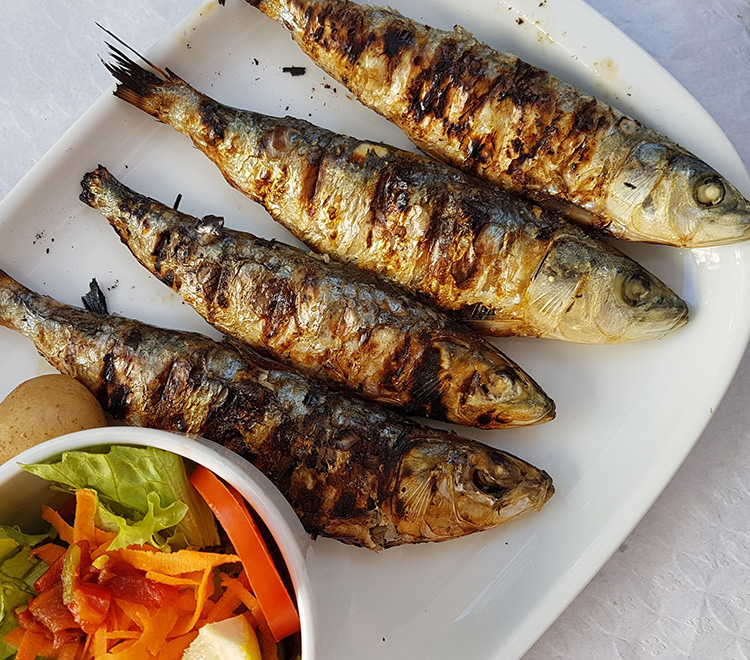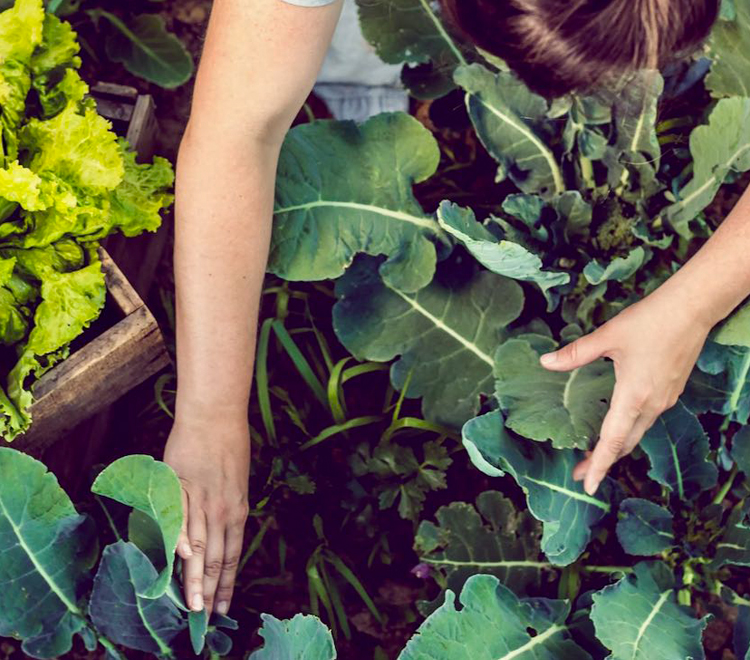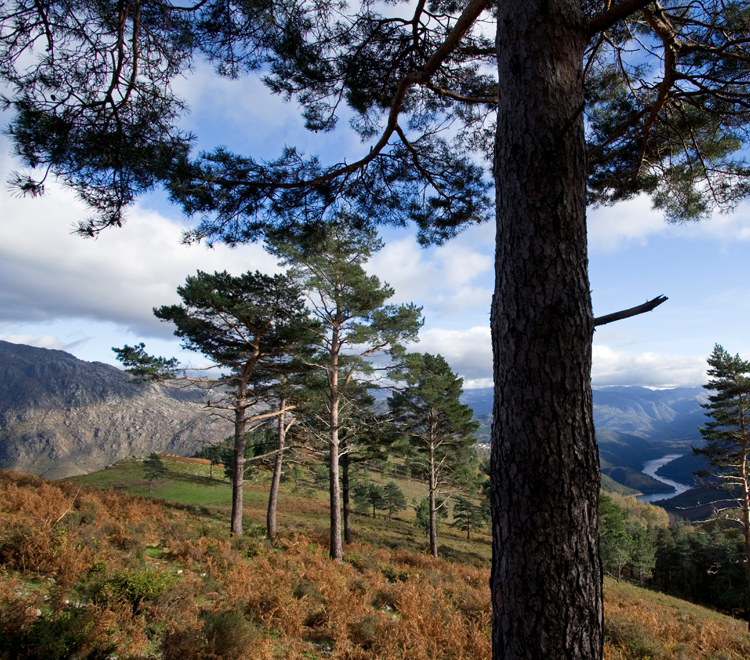CIM Alto Minho, together with its 10 associated municipalities and in partnership with IPVC (CISAS), is promoting a living lab in Alto Minho focused on public school canteens, whose purpose is to promote the transition (firstly within the school environment and, through it, throughout the territory) to healthier and more sustainable food consumption and production habits. Additionally, it will contribute to: improve overall health, shorten circuits and supply chains, support local producers, boost territorial development, reverse the abandonment of cultivated land, promote territorial cohesion, reduce asymmetries and increase Alto Minho’s resilience to climate change.
Alto Minho’s living lab aims to engage local stakeholders (Alto Minho’s schools, municipalities and food producers/suppliers) and it is intended to encourage wide participation to inspire and induce change – i.e. an initiative of the communities, with the communities and for the communities, focusing on the most vulnerable people (latu sensu).
Despite being fully aware that this transition will not happen overnight, we are certain that with scientific data and a solid partnership, both at local and European levels, together we will be able to contribute to make this change happen, both at local and global scale, as quickly, inclusively and effectively as possible.
Video in Portuguese with English subtitles
Who we would like to support
A key area of work for the Municipality is to support vulnerable groups, particularly people with a low socio-economic status. There are already systems and initiatives in place to meet the food needs of these individuals through initiatives like social pricing in several restaurants and grocery stores, as well as food support provided by local social organisations. In the Alto Minho’s Living Lab, we will aim to support vulnerable groups and shape communities by focusing on children's meals, positively influencing their choices, raising awareness and sharing best practices about healthier and more sustainable diets. This approach will involve a bottom-up strategy, engaging pupils, their teachers, canteen managers, Alto Minho’s municipalities (decision makers) as well as food suppliers.
What’s coming next
A kick-off event was held on February 24, 2023 targeting both Alto Minho's municipalities and school grouping’s directors/representatives. During this meeting several topics were presented. These included the FEAST project, which covered the partnership, overall goals and methodology, foreseen overall approach, and expected short- and long-term outcomes. Alto Minho's Living Lab was also presented, including the target group, foreseen methodology, strategic goals, stakeholders' roles, and the project's next steps. As a result of this joint meeting, local meetings have been scheduled and some have already taken place. Prior to this kick-off event, some exploratory and informal meetings were held, press releases were produced and distributed to local/regional media and posts were published on CIM Alto Minho’s social media and website.
In the near future, given FEAST’s timeframe, CIM’s resource availability and the fact that, in Alto Minho, according to national education statistics, there are 123 public schools, pilots will be established. Based on the inputs and on the data collected, both through questionnaires and focus groups, a diagnosis of the barriers and facilitators to support the transition to healthier and more sustainable diets will be produced to aid the solution co-design process.
Local Food Challenge
Alto Minho has gained international recognition for its wine and gastronomy, which are unique features and significant tourist attractions of the region. Despite having a lower prevalence of food-related health issues than other regions of the world, Alto Minho has seen an increase in diabetes, obesity and cardiovascular diseases. While food security is currently not a concern, climate change may cause problems in the future, if measures are not undertaken.
Regarding food-related environmental issues, Alto Minho is seeing an increase in the consumption of animal products, mostly meat, and products of distant origin. Processed food is being eliminated from schools but remains prevalent in households. Another challenge the region faces is the abandonment of farmland, which may worsen due to climate change.
Behaviour change endorsement and sustainable and healthy food procurement may present themselves both as a solution and a challenge, whilst limited budget together with significant increase of prices (either due to increases in production or distribution costs) may compromise and/or delay the transition to healthier and more sustainable dietary behaviour.
Living Lab Activities
The living lab in Alto Minho will incorporate various activities such as seminars, focus groups, interviews, questionnaires, as well as vertical and horizontal best practice exchange. By promoting stakeholder interaction and exchange, it aims to: determine on-going practices; assess hurdles to positive change and identify opportunities; disseminate knowledge as well as expertise, not only within but also across sectors; and, ultimately, to make change a reality.
To kick off the project, joint meetings were held, both at political and technical levels, to present the projects’ overall goals, methodology, and short-term strategy, as well as receive feedback from local stakeholders. Press releases were also produced.
A diagnosis of the current status is being conducted in all ten municipalities, both through questionnaires and focus groups, to determine interest/wiliness to support/carry out transition to healthier and more sustainable diets and habits; to establish roles, procedures and responsibilities (i.e. public school’s canteens governance); to establish the motives that lead to children not eating as healthily as they could/should and to determine what is being done to alter this behaviour.
Get to know the region
In mainland Portugal there is no greener land than the Alto Minho. Here the landscape rises as an amphitheater, from the seashore, passing through the valleys of the Minho and Lima rivers to the heights of Peneda and Gerês mountains, in a succession of landscapes that share the same vegetal matrix and the same “wet light of inescapable sweetness“ (in Orlando Ribeiro, “Portugal, the Mediterranean and the Atlantic”).
Alto Minho is a region located in north-western part of Portugal and integrates the municipalities of Arcos de Valdevez, Caminha, Melgaço, Monção, Paredes de Coura, Ponte da Barca, Ponte de Lima, Valença, Viana do Castelo and Vila Nova de Cerveira. It borders to the North and to the East with Galicia (Spain), to the south with the Cávado region and to the west with the Atlantic Ocean. Alto Minho has, according to the Portuguese 2021 census, an area of 2,218.8 km2 and a population of 231,266 inhabitants (the majority of which within the 25-64 age group).
It is an urban low-density territory, comprising two small cities (Viana do Castelo and Valença) and several dispersed urban settlements (the most relevant, due to their size, being the towns of Arcos de Valdevez; Caminha; Vila Praia de Âncora; Melgaço; Monção; Paredes de Coura; Ponte da Barca; Ponte de Lima and Vila Nova de Cerveira).
- READ FULL TEXT
Alto Minho is characterized by the richness of its natural landscapes, which is distinguished by the harmony of its various ecosystems: maritime, riverine and land (mountains). It is rich in natural habitats, particularly wetlands, from dune and estuary areas along the coast, to peat bogs and mountain waterways. In total, six major conservation priority areas are defined, all of them classified as Habitats Directive Sites (Natura2000), including, among others, the Peneda-Gerês National Park, and the Protected Landscapes of Corno de Bico and Lagoas de Bertiandos and São Pedro d’Arcos.
Alto Minho also has a rich patrimonial and cultural heritage, where the following stand out:
- the 871 archaeological sites identified and intervened by the Institute for the Management of Architectural and Archaeological Heritage (IGESPAR) (rock art; fortified settlements; prehistoric funeral monuments, such as dolmens and necropolis; milestones; etc.);
- the rural settlements integrated in the "Aldeias de Portugal" network, namely the villages of Lindoso, Soajo, Germil, Cabração, Sistelo, Branda da Aveleira, Covas, Castro Laboreiro, Bico e Vascões, Porreiras and Serra d'Arga (Arga de Baixo, Arga de Cima and S. João d'Arga), which preserve a unique environmental and built heritage;
- and the Portuguese Way of Santiago de Compostela (Caminho do Lima, Caminho do Noroeste; Caminho do Norte, Caminho de Celanova, Caminho da Geira Romana and Caminho da Costa).
The region also has 173 properties classified by IGESPAR, the vast majority of which are Properties of Public Interest and National Monuments, with special emphasis on civil heritage (fortresses, castles and forts, the 19th Roman road, the mining complex from Roman times, bridges, pillories, palaces, towers, palaces and manor houses) and the religious heritage (churches, chapels, crosses, monasteries, convents).
According to “Census 2011 Definitive results – Northern Region”, in 2011 "Agriculture, Forestry, Hunting and Fishing" was the predominant specialization sector in six out of the ten municipalities of Alto Minho (namely: Arcos de Valdevez, Caminha, Melgaço, Monção, Paredes de Coura and Ponte da Barca), followed by, ex aequo, "Industry" (in Valença and Vila Nova de Cerveira) and "Construction" (in Ponte de Lima and Viana do Castelo), which corroborates this territory’s markedly rural nature. Recently, tourism has been gaining momentum, due to its natural, archaeological and sociocultural heritage but also for its wine and gastronomy.
In terms of education, according to INE (2011), only 11.36% of Alto Minho’s residents have a higher education degree and most of this territory’s population (61,18%) has only concluded the basic level of education - which is not surprising considering this territory’s demographic profile and its history of outward migration. Statistical data from 2020, points out to Alto Minho having 32,001 students distributed by its 123 schools – from kindergarten to secondary schools - the majority of which are managed by or jointly with Alto Minho’s municipalities.
Frequently asked questions
- When was the living lab established, and how has it evolved over time?
In Alto Minho, there are several initiatives and partnerships that focus on local products, gastronomy, vulnerable groups, social inclusion, sustainable development, and promotion of health. However, it was only in 2022, within the framework of the FEAST project, that the Alto Minho Living lab was established, with the main aim of promoting integration, coherence and increased articulation/cooperations between action and planning. We hope that this living lab will continue to serve its purpose in the long term, even after the project is completed.
- Who are the key stakeholders involved in the living lab?
Currently, the Alto Minho Living Lab comprises a group of local public and private entities, which include Alto Minho's ten municipalities, Viana do Castelo's Polytechnic Institute, the school community, small farmers, and fishermen (as well as their associations and cooperatives). The engagement process is ongoing, and CIM Alto Minho is also involved in the Living Lab.
- What activities are conducted in the living lab, such as workshops, seminars, conferences, or hackathons?
So far, only the kickoff meeting and decentralized meetings with stakeholdes have been held. More meetings are expected to take place in the near future.
- What facilities are available at the Living Lab?
Regarding facilities, Alto Minho's Living lab currently has office spaces and meeting rooms available. Although there are no laboratories or research equipment foreseen at this point, if needed, the Polytechnic Institute of Viana do Castelo is well equipped and is willing to cooperate whenever necessary.
- What lessons have been learned from the living lab, including successful strategies, challenges faced, and areas for future improvement?
Currently, an initial assessment is underway to identify the practices being implemented in each municipality (regardless of roles and responsibilities). This will enable us to determine the most effective strategies and conduct thematic workshop to address challenges and areas of improvement in the future. Although it is still in the early stages, the most commonly mentioned challenges/barriers were funding and behavior. Furthermore, peer-to-peer exchange was identified as a beneficial approach.
At a coordination level:
CIM Alto Minho, Alexandrina Monteiro
CISAS/IPVC, Ana Teresa Oliveira
At a technical level:
CIM Alto Minho, Sandra Estevéns
IPVC, Susana Campos



